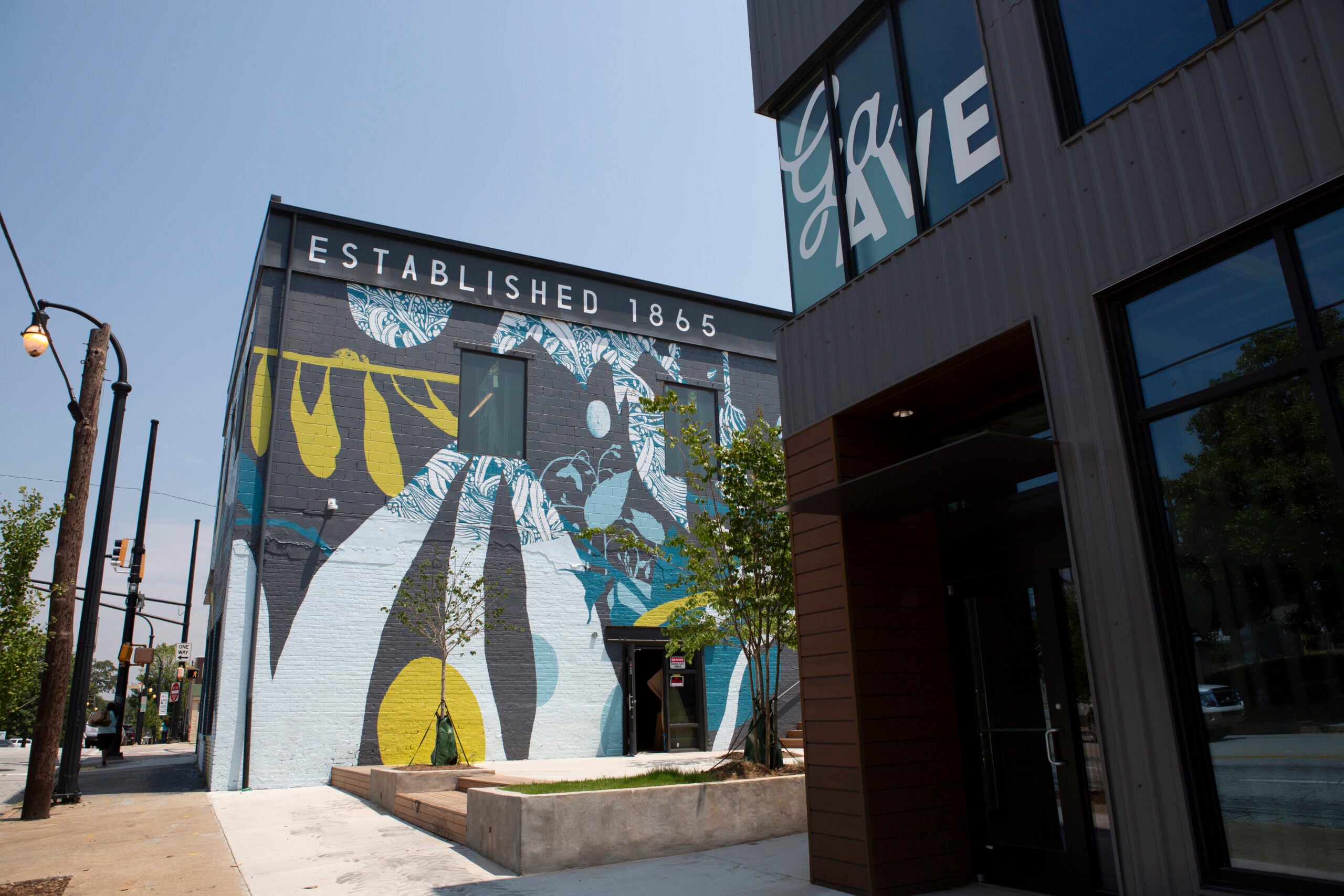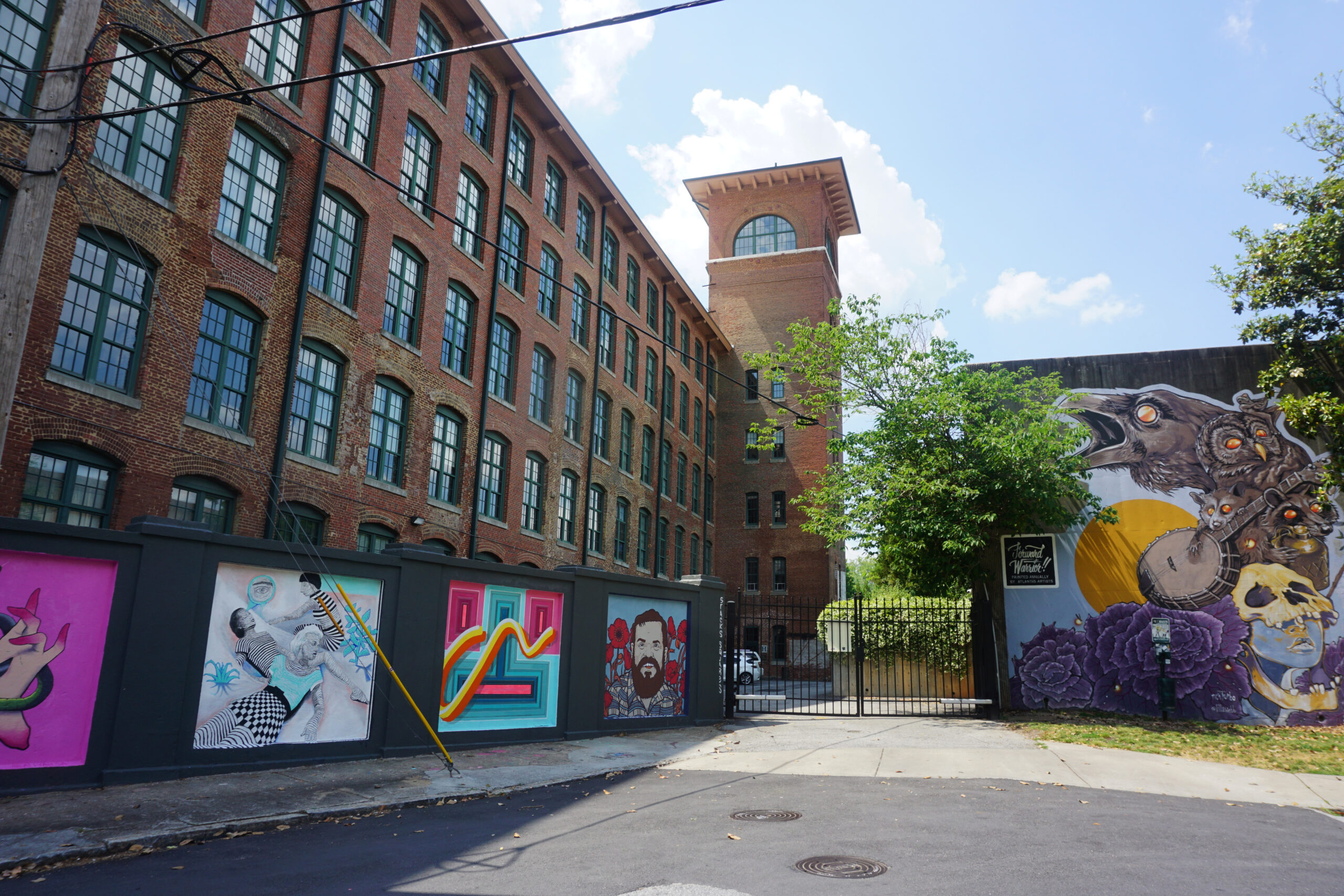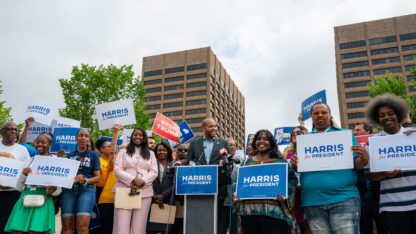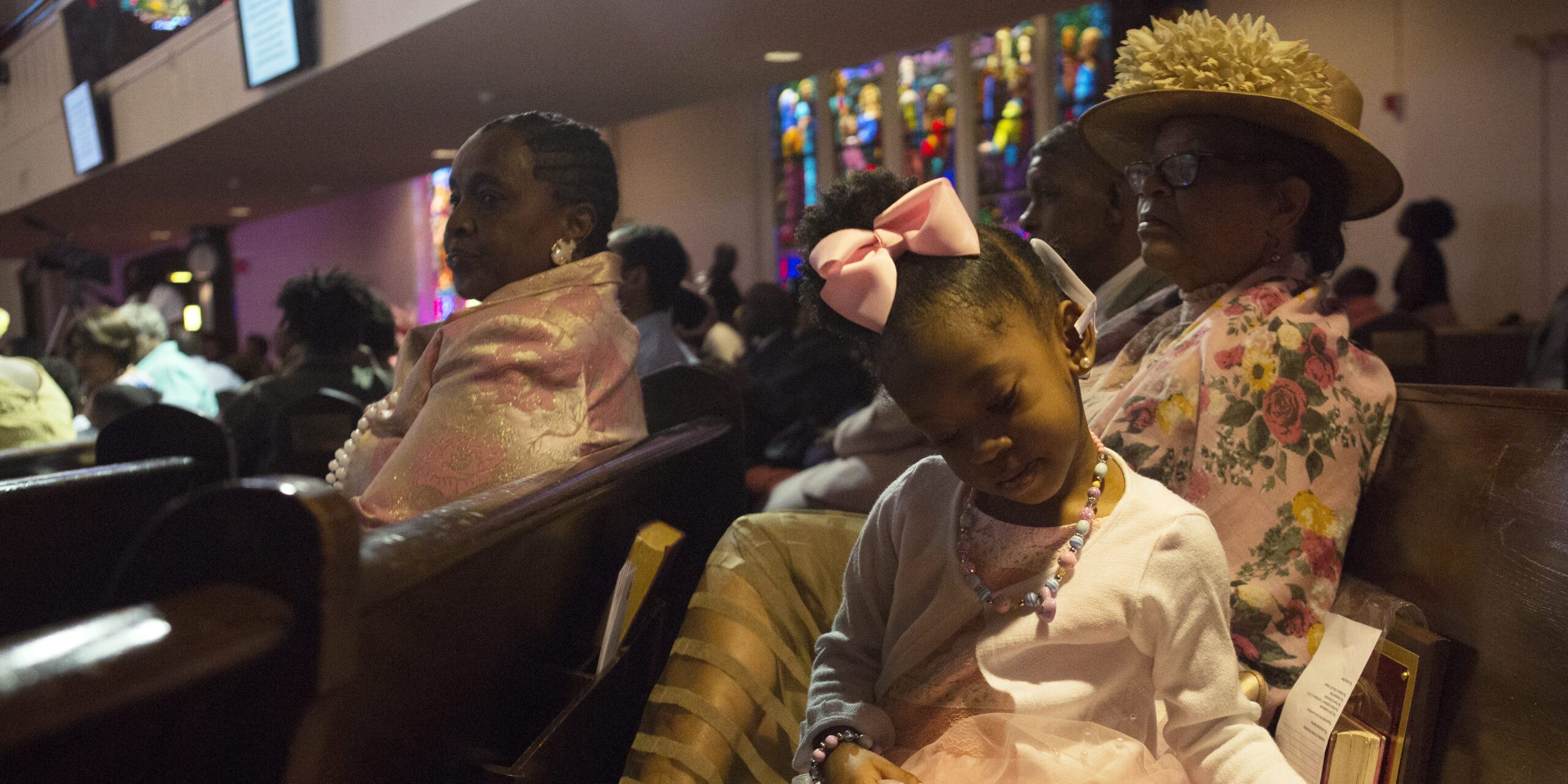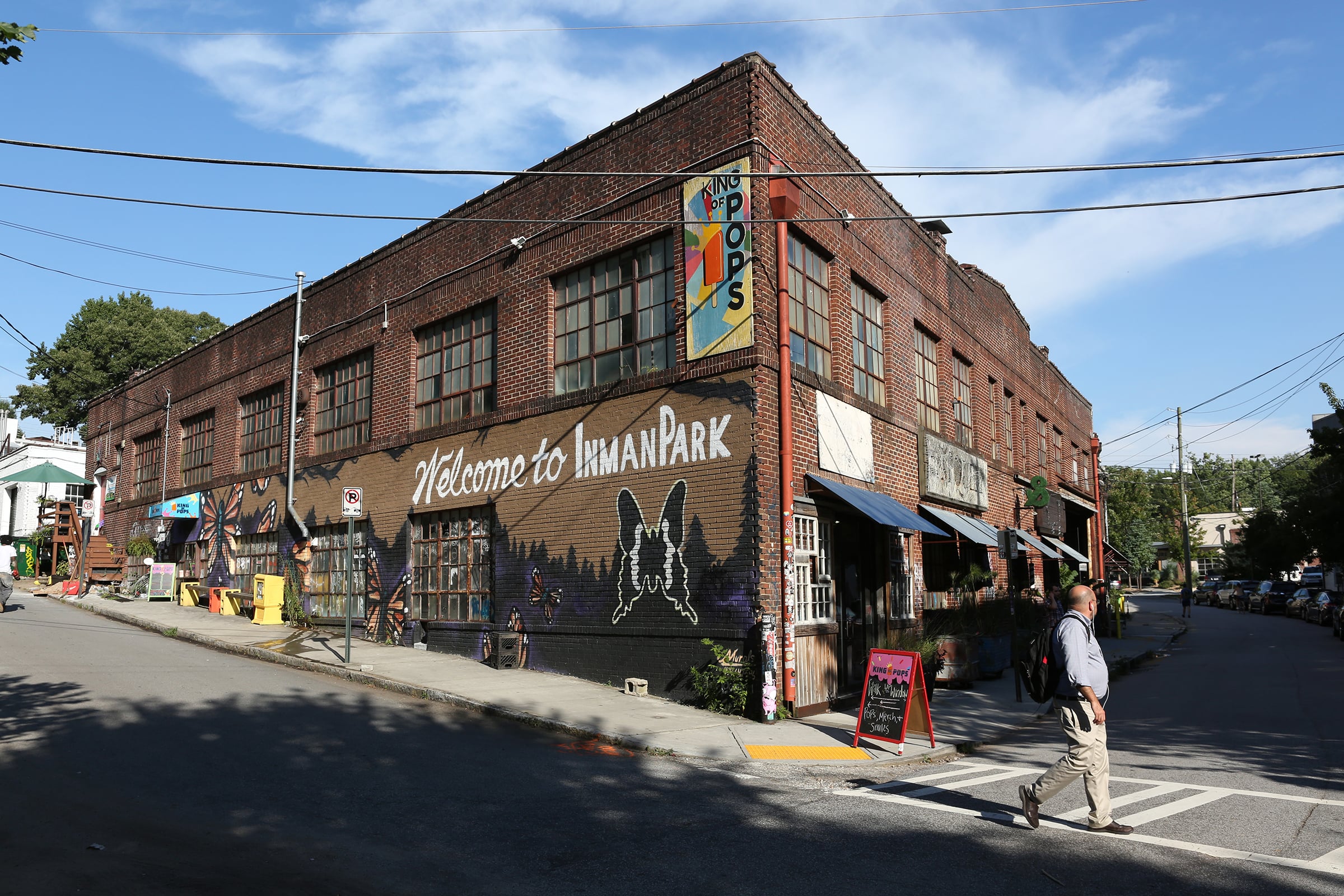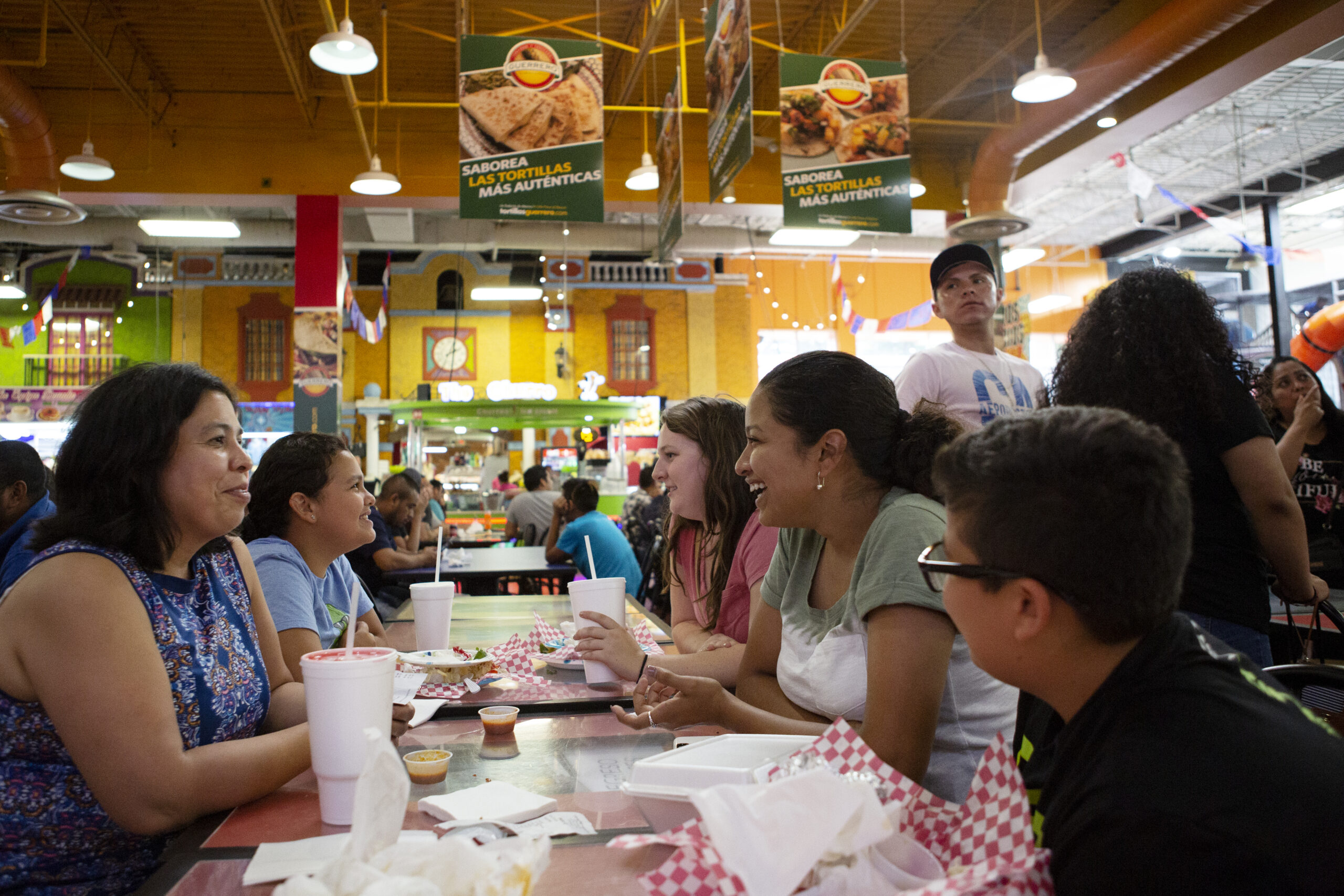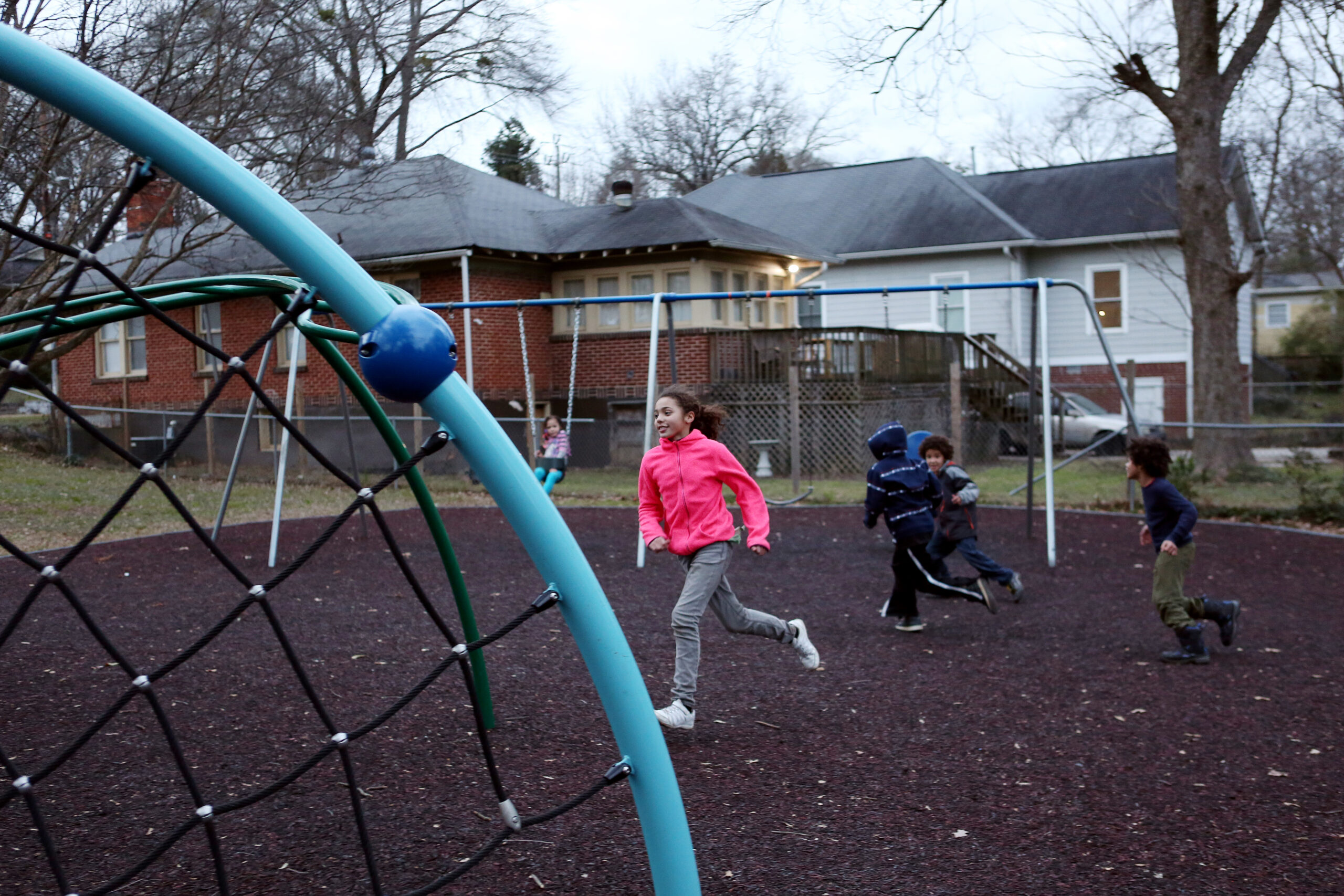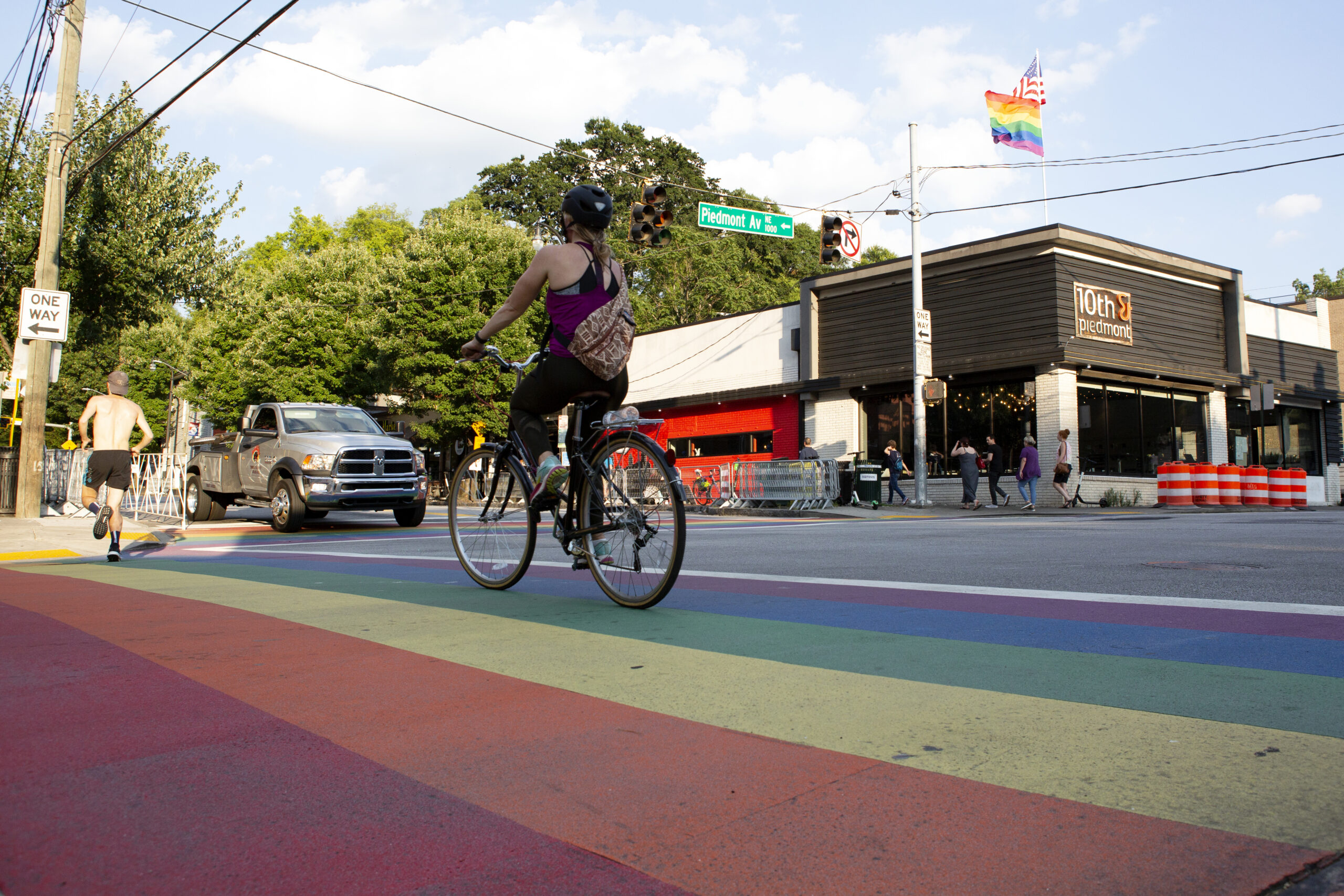As people file into a nondescript room on the third floor of a bureaucratic-looking building, they sign their names and addresses on a spreadsheet.
Then they take a seat on white folding chairs, the kind you might find at a picnic. As they wait, folks make small talk: about their vacations, their dogs, their work. The kind of friendly chatter that’s typical among neighbors.
Which this group of people is. They’re residents of Atlanta’s Summerhill neighborhood.
At 7 p.m. sharp, Cheryl Turner calls the July meeting of the Organized Neighbors of Summerhill to order.
First on the docket: roll call. Each of the more than 40 people who have gathered on this Monday evening takes a turn saying their name, which block they reside on and how long they’ve lived in Summerhill.
One woman says she’s a 42-year veteran of the neighborhood, and some in the room let out “oohs” and “ahhs.” When the introductions reach a sharply dressed, young professional seated near the back, he introduces himself as Jack Murphy.
When Turner, who is the president of the neighborhood group, prompts him in a light-hearted tone, “You’ve been here … ?”
“I’ve been here five and a half years,” he replies coyly.
But Murphy isn’t a resident of Summerhill. He’s a developer.
Murphy, and the two colleagues seated beside him, are here on behalf of Carter & Associates. It’s the development firm that, along with Georgia State University, is responsible for the change that is quickly unfolding just up the street from this meeting.
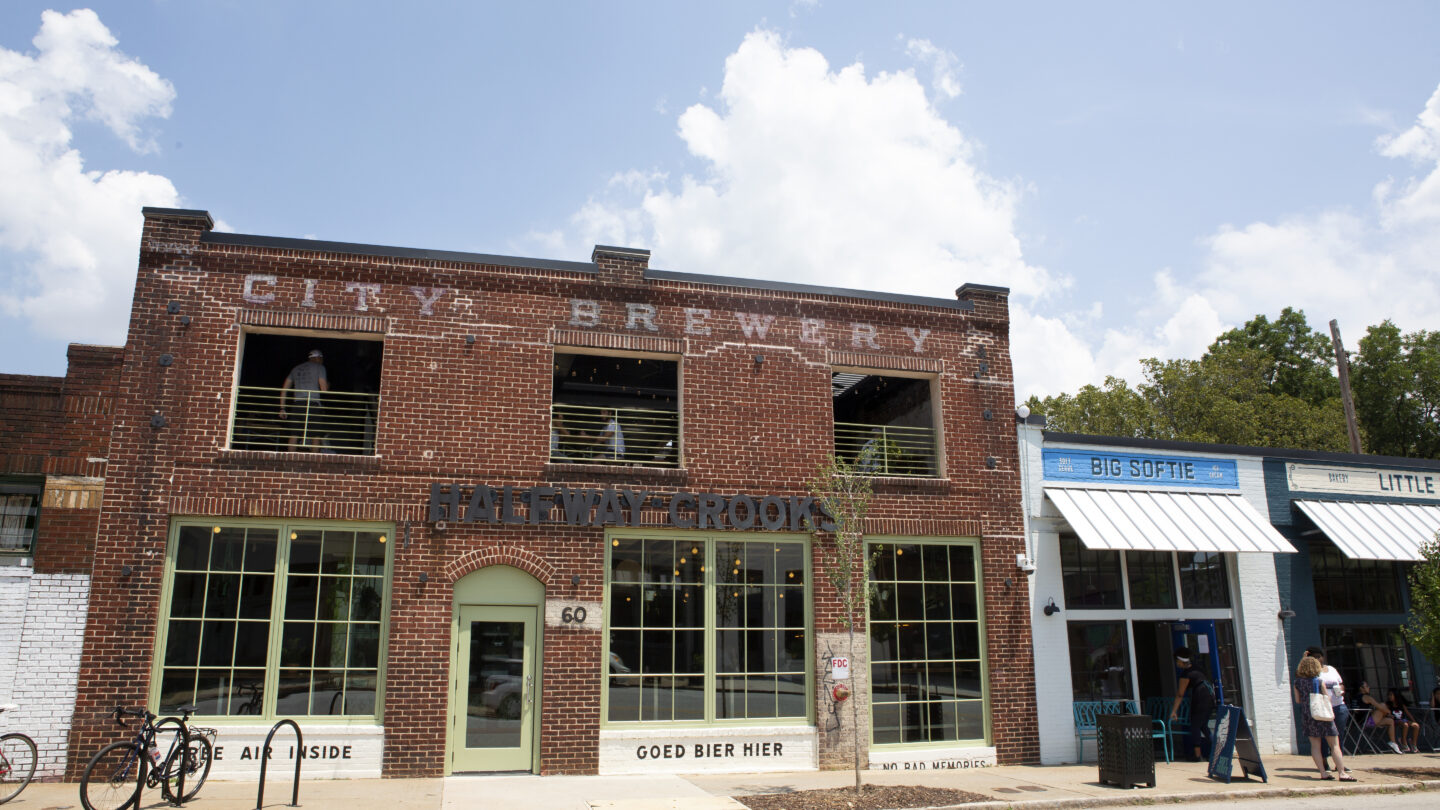
Long-abandoned storefronts on Summerhill’s Georgia Avenue are starting to house new businesses like an ice cream shop, a brewery and a barbecue joint.
But it didn’t happen overnight. In the six years since the Braves announced they would leave Turner Field for their new home in Cobb County, the residents of Summerhill and developers have had long – sometimes heated – discussions about what the future of the neighborhood ought to look like.
The tension reached a fever pitch in the spring of 2017, when activists set up a tent city outside Turner Field. After two months, police tore down the camp of more than 20 tents.
The protestors argued for more affordable housing and more transparency in the development process. Not all of their demands were met and even today, the conversations continue.
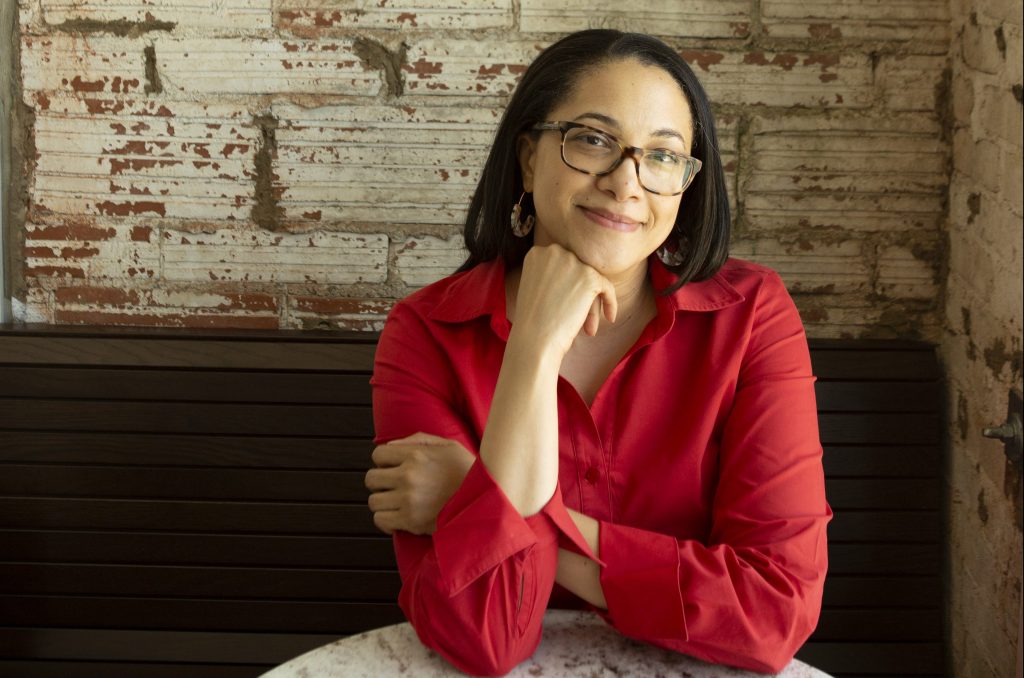
Cheryl Turner says even though there’s been a fair share of skepticism, she appreciates the ongoing dialogue with developers. She and others have fought hard to have a seat at the table when decisions affecting residents are made.
“I know they have their plans, and we have our plans,” Turner said of Carter. “But I think that it is a good, healthy working relationship.”
To many Atlantans, the neighborhood is perhaps best known for some big moments in sports: Hank Aaron’s record-breaking homer, the Braves World Series win and the ’96 Summer Olympics all happened in Summerhill.
Situated in the shadow of downtown, the relatively small neighborhood is located just south of I-20 and just east of I-85. It neighbors Mechanicsville, Peoplestown and Grant Park.
If you didn’t know better, being in Summerhill feels remarkably like life in a small town. The streets are narrow and there aren’t many high rises. There are a couple of parks, where people run track and play pickup basketball and football.
At that recent neighborhood meeting, residents spend nearly two hours discussing renovations to those parks, along with the recent crime reports, parking concerns and property taxes: the brass tacks stuff of life.
But to understand the Summerhill of today and the new era it’s facing, you have to understand its past.
Summerhill has a complex history. It’s had to fight myriad factors over the years to remain intact. And residents here have learned to be wary of promises.
The ups and downs of the neighborhood — particularly along its main thoroughfare, Georgia Avenue — are documented in the recent work of historian Marni Davis.
“I’ve been interested in the history of that street and what it can tell us about changes in Summerhill specifically, changes in Atlanta more generally, and changes in American cities throughout the 20th century,” said Davis, an associate professor of history at Georgia State University.
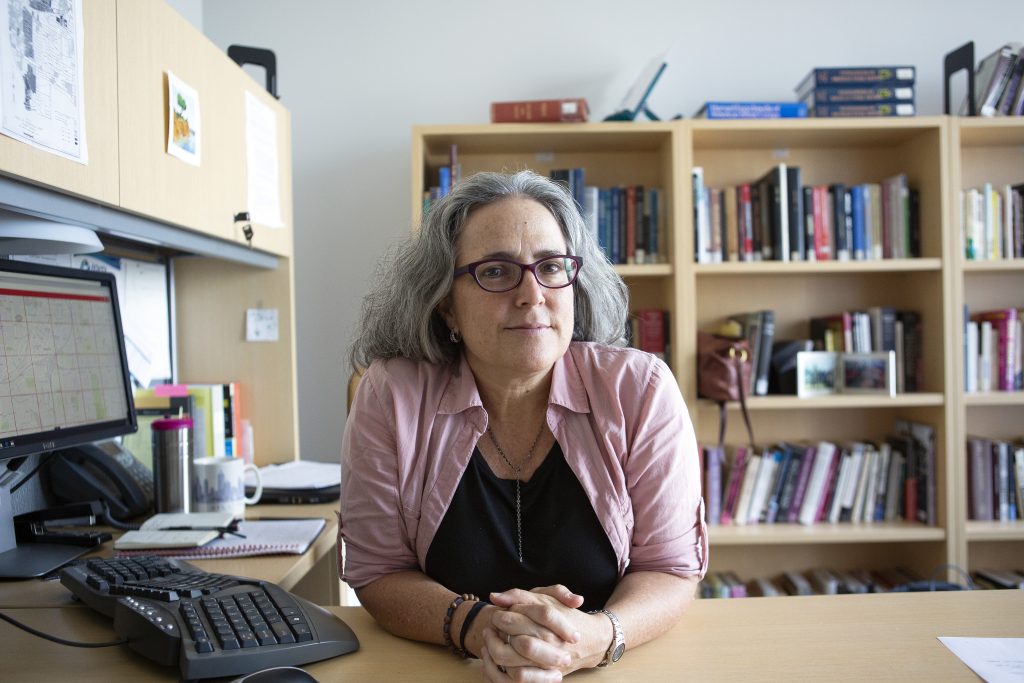
Summerhill, which was founded by African Americans during Reconstruction, is one of the oldest predominantly black neighborhoods in the city.
The boundaries of the community today once housed two neighborhoods: Summerhill and the Southside, which was home to a large population of Jewish immigrants.
In the 1920s, Georgia Avenue was zoned as a local retail district, and people from the surrounding areas provided more than enough foot traffic for businesses to thrive.
The avenue was then like a small town’s main street, complete with practical places like a butcher, dry cleaner, pharmacy, barber, grocery stores and two shoe repair shops.
Since the surrounding neighborhoods were mixed-class, there were a variety of stores in different price ranges. However, there was an effort by the city to break up mixed-race communities and make neighborhoods racially homogeneous. Summerhill and the Southside were no exceptions.
By the height of Georgia Avenue’s commercial success in the 1940s and ’50s, the effects of redlining began to set in. That, paired with the construction of the expressway, meant Summerhill was largely broken up and many residents were edged out.
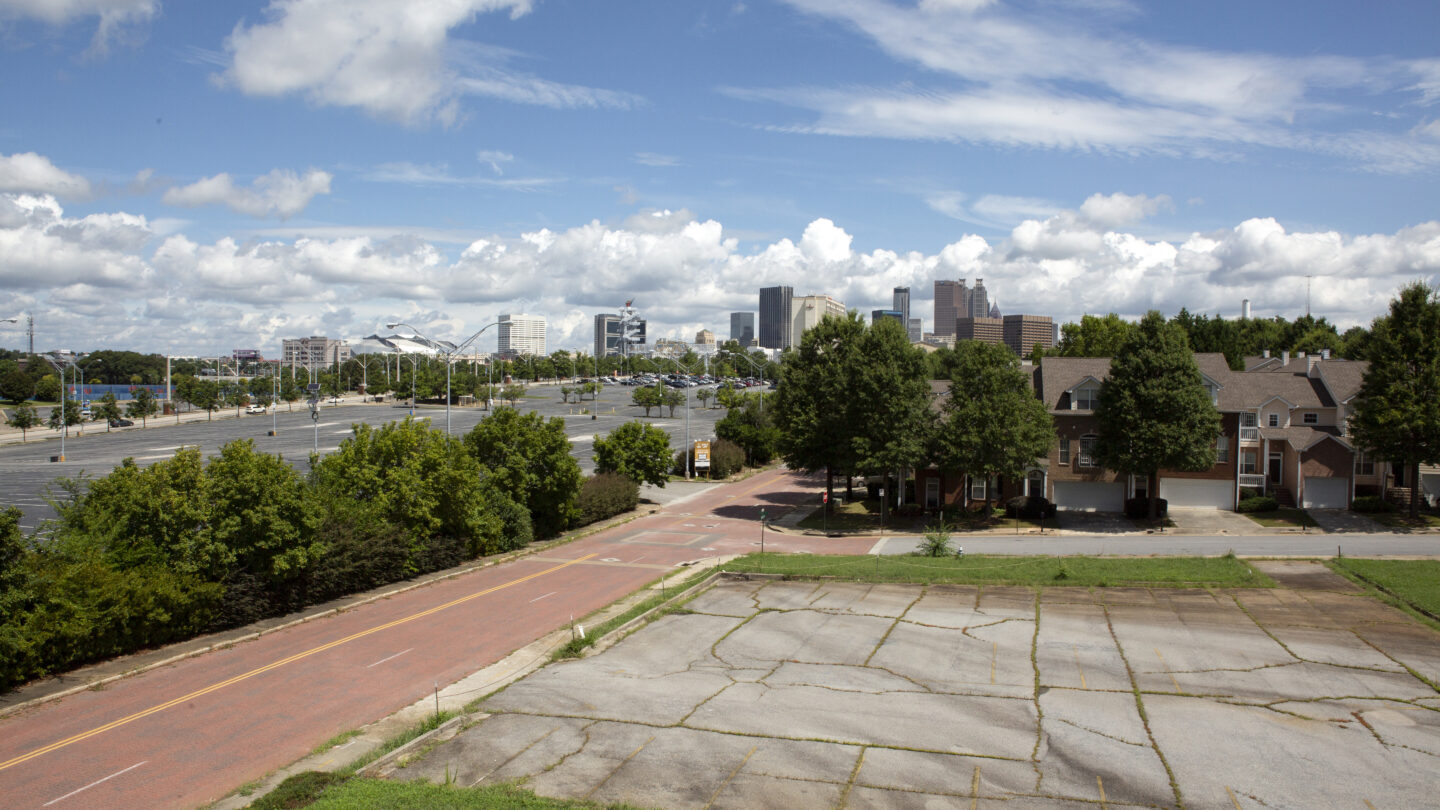
“The block between Washington and Pulliam Streets was the first cleared, to make way for what is now the 75/85 downtown connector,” Davis wrote in her recently published research project.
By the late 1950s, all of the addresses on that block had disappeared from the Atlanta City Directory.”
Around this same time, then-Mayor Ivan Allen Jr. made a decision that would forever alter the fabric of Summerhill: he enticed the Milwaukee Braves to move to the South. It came with the promise of a new stadium.
The land for Fulton County Stadium – which a Braves employee equated to looking like “a spaceship” – was cleared without input from the neighbors, according to Davis’ research.
In the summer of 1965, The Beatles played at the brand-new stadium before 34,000 adoring fans (it was the Fab Four’s only-ever performance in Atlanta) and just like that, Summerhill became synonymous with stadiums.
It was cemented the next year when the Braves played the inaugural season at their new home – kicking off their 50-year residency in the neighborhood.
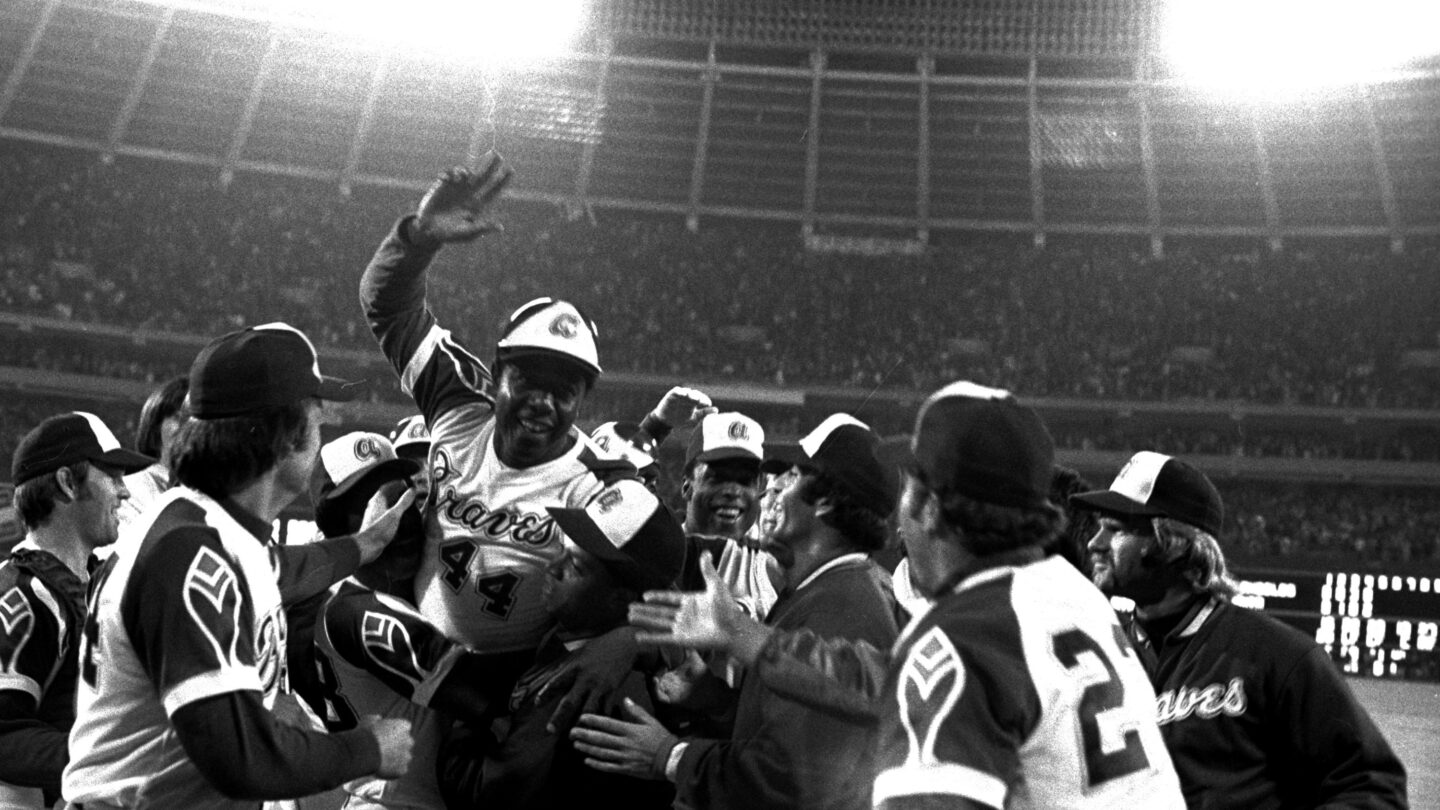
Meanwhile, longtime Summerhill residents began to leave in droves.
The population of the blocks west of Capitol Avenue went from nearly 12,000 in 1950 to 7,600 in 1960, to fewer than 3,000 in 1970, Davis found.
“It becomes widely regarded as neighborhood in decline, and at this point is often referred to as a slum,” Davis said.
In 1966, after a black resident of the neighborhood was shot by a white police officer, days of unrest broke out in Summerhill. Mayor Allen went to the neighborhood in an attempt to ease tensions.
Allen walked through the streets of Summerhill, even standing on the hood of a car with one of the demonstrators.
According to an obituary for Allen in The New York Times, “He chatted with the rioters, even asking one for a cigarette. The policemen were wearing helmets, but he refused one.”
The event turned violent – leading to one death and numerous injuries. Even when things calmed down, the underlying agitation continued to crop up in the years ahead.

By 1970, less than half of the businesses on Georgia Avenue were still open, according to Davis. By the ’80s, Summerhill had fallen largely into urban decay, due to disinvestment.
But the next decade: all eyes were on Summerhill, when the Olympics brought a delegation from around the world to Atlanta. With it, came a plethora of promises to invest in the neighborhood in time for the games.
Plans called for a second stadium – an 85,000-seat facility across from the existing structure – to be built. There were also calls for storefront renovation along Georgia Avenue and other improvements throughout Summerhill.
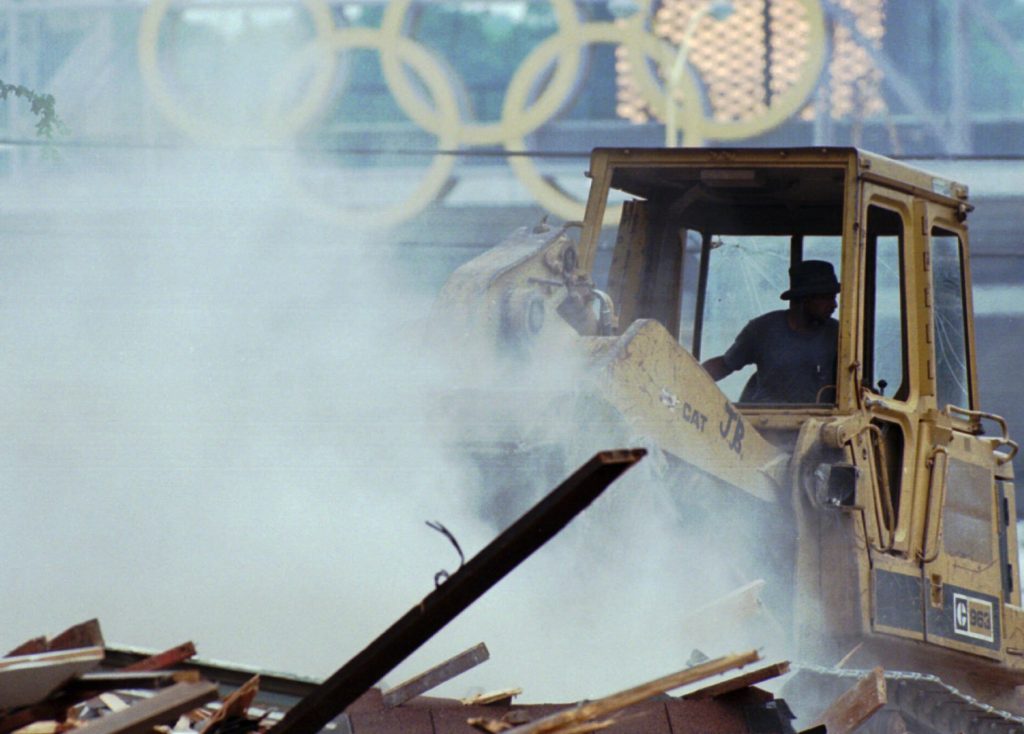
There were some single-family homes and townhouses built around this time, but many of the promises remained unfulfilled and much of the manicured makeover of Georgia Avenue proved superficial once the games were gone.
“Georgia Avenue had become a tragically diminished version of its earlier self – a blighted old streetscape that Braves fans passed through on their way to the former Olympic Stadium, now Turner Field,” Davis wrote.

In 2013, the Braves announced they’d leave Summerhill for the suburbs at the end of their lease.
It meant that once again, Summerhill was in flux, but neighbors were ready this time.
That’s where Carter & Associates comes in. The Atlanta-based development group and Georgia State University bought the stadium and several acres in Summerhill.
Davis said it raised a crucial question: “How do we balance the interests of a massive institution with the interests and needs of a small community?”
It’s the question the developers and residents of Summerhill have been grappling with.
“I think that part of the tension was sort of a deep-seated skepticism,” Davis said. “And it’s not at all unreasonable for neighborhood residents to think that because history shows that that’s what’s happened.”
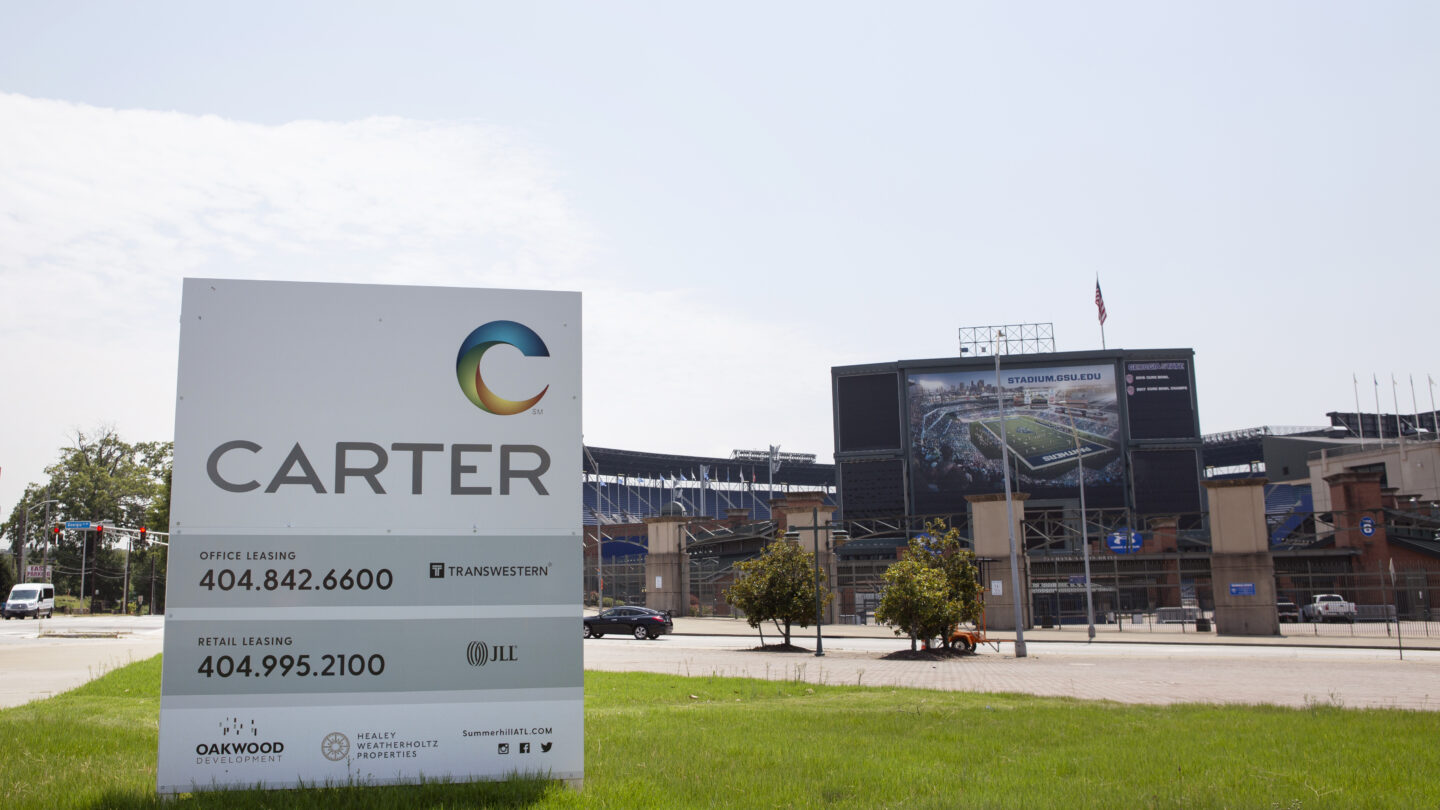
The past and present of Summerhill meet at the four-way intersection at Georgia Avenue and Fraser Street. On one corner, there’s a brick building with a large red sign, which is being swallowed by foliage, in the shape of an arrow on the roof. It reads: “Azar’s Package Store.”
The windows, at the now defunct liquor store, have bars on them. In 1970, the store was the site of a protest staged by residents.
It was in response to allegations that the owner, Donald Azar, who opened the store in 1965, had physically assaulted an African American woman who worked there.
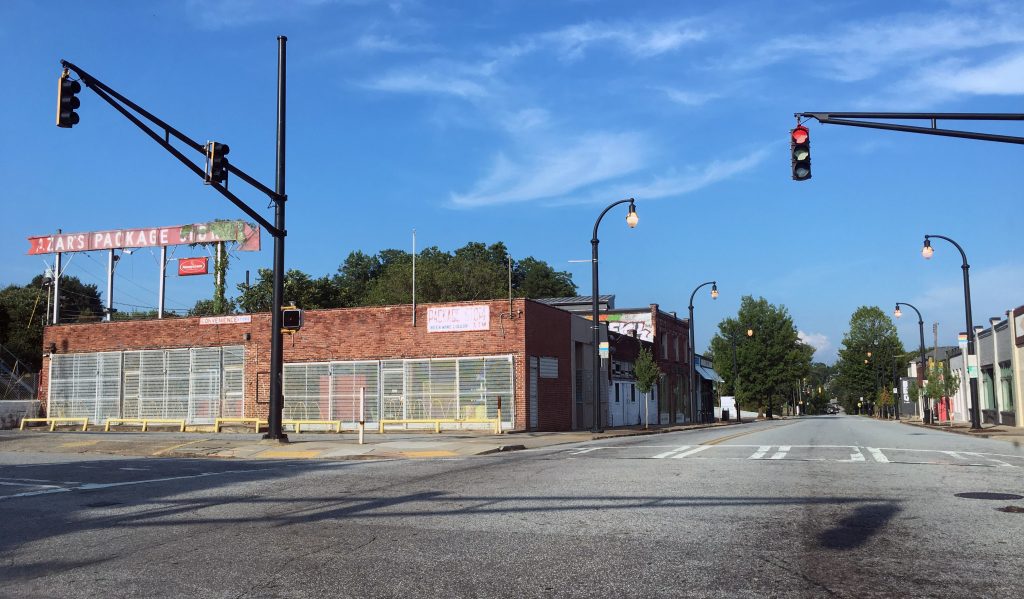
Protesters held signs that called for Azar to leave the neighborhood and expressed frustrations with how business owners throughout Summerhill treated residents, many of whom were from low-income and minority communities.
The store remained open at that corner for decades, before closing for good.
Today, kitty-corner from Azar’s is a brightly painted building advertising a forthcoming Mexican bodega. Near the top of the building, there’s freshly painted lettering that reads: “Summerhill: founded in 1865.”
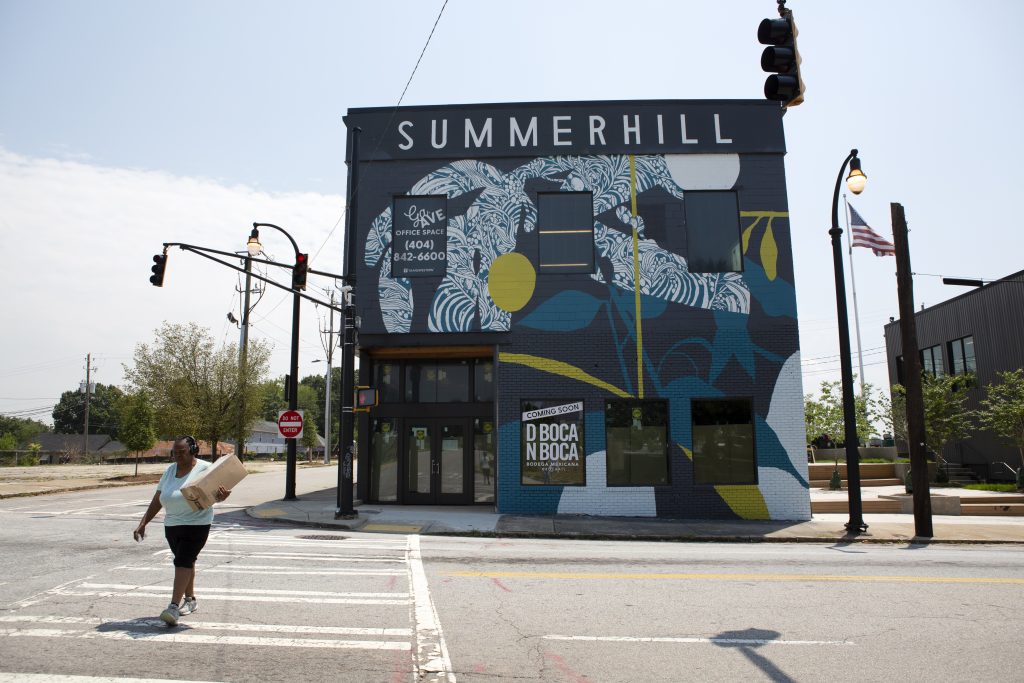
The other two corners at this four-way stop are home to a shuttered Chinese restaurant with some graffiti on the side and a parking lot (once known as the “Gold Lot”) where a large sign displays Carter’s logo and contact information.
The juxtaposition of the old and the new is stark.
Just up the street, at 60 Georgia Ave., is one of the most recent residents on the street: Halfway Crooks Brewery. Shawn Bainbridge, one of the co-owners, says maintaining the character of the building was important to them.
“We told all the construction guys please don’t demolish this thing. So I think we were able to preserve most of it,” he said.
Bainbridge, who sports a blue flat brim hat that says “Lager Lager Lager Lager” on it in bright gold stitching, said he wanted to open a small brewery so he could remain “hands on” with the product.
He represents a new era of businesses in Summerhill, on the same street that once housed dozens of mom and pop shops.
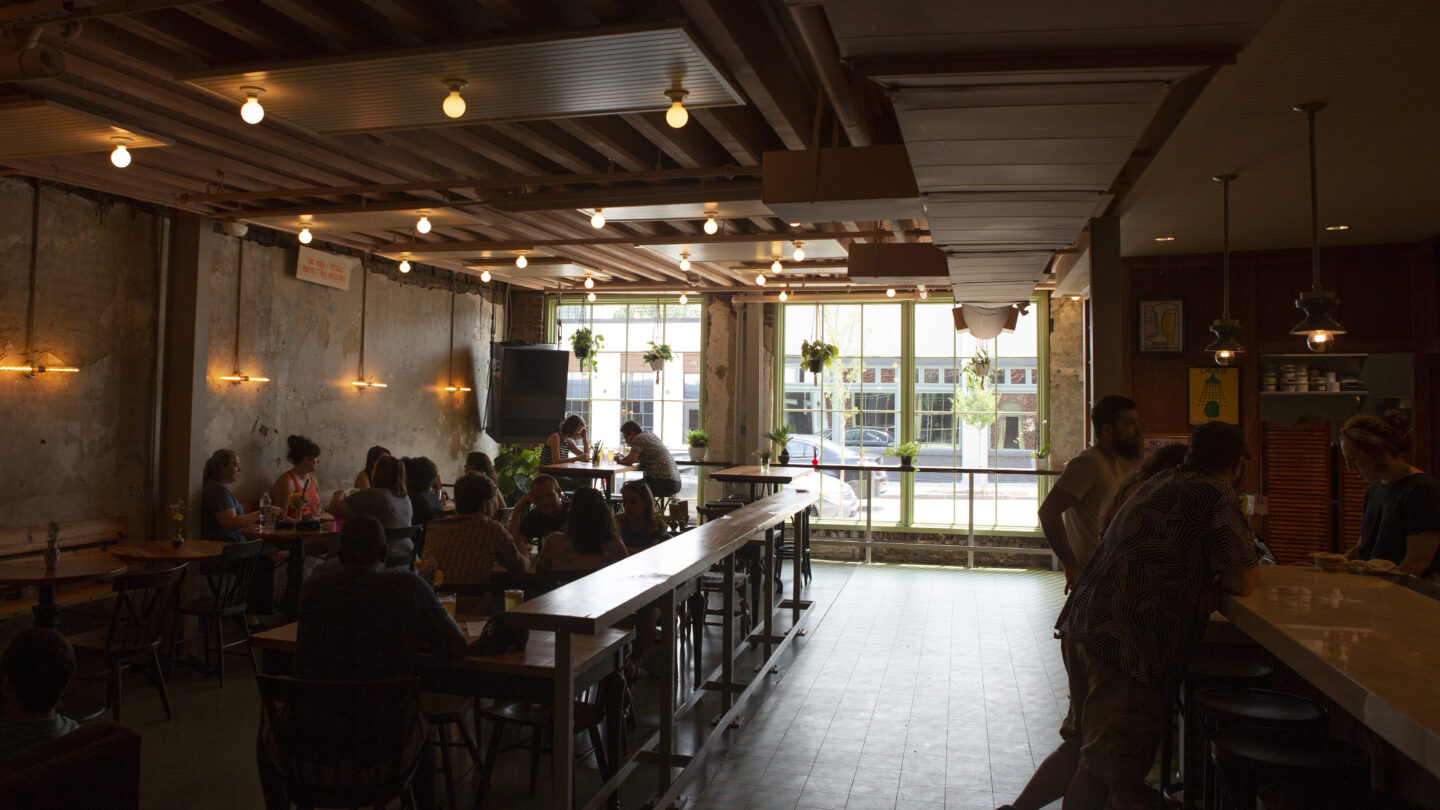
That’s the Georgia Avenue Geoff Heard remembers encountering when he moved to the neighborhood as a child in the late 1940s.
There were no stadiums or highways, but there was a true sense of community. Despite everything that has happened since, Heard says that spirit carries on today.
It’s what motivates him, now at 80 years old, to still work to improve this neighborhood – currently as the executive director of the Summerhill Neighborhood Development Corp.
He sees this current iteration of development as a chance for Summerhill to be “prosperous” again.
“It’s a return to the glory days of the community,” he said. “Because when I first came, it was a lot going on on Georgia Avenue.”
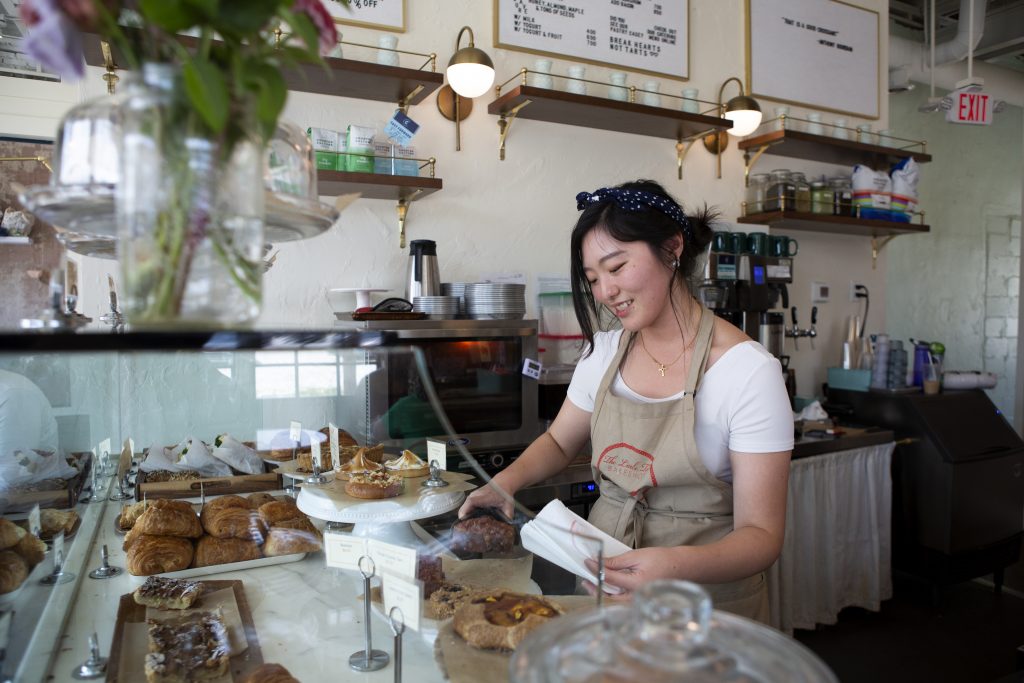
However, GSU’s Davis says it remains to be seen if the businesses that are opening here — which she primarily calls “upscale hipster food commerce” — will serve longtime residents.
At least in this first wave of development, it’s not the practical kind of commerce that was popular during Heard’s childhood.
Davis says she hopes there will be a diversity in offerings — not just in terms of products, but also at varying price points.
“I like to drink an oat milk cortado just as much as anybody else, I guess. But I don’t see that kind of commerce as sustaining a neighborhood in the long term,” Davis said.
The neighborhood will soon be home to a new demographic of residents, and potential customers for the newly opened eateries: a new GSU dorm situated across from the stadium, will house hundreds of students starting this fall.
Turner, who has lived in the neighborhood for about 20 years, says they welcome the students – but want to make sure they know they are moving into an established neighborhood.
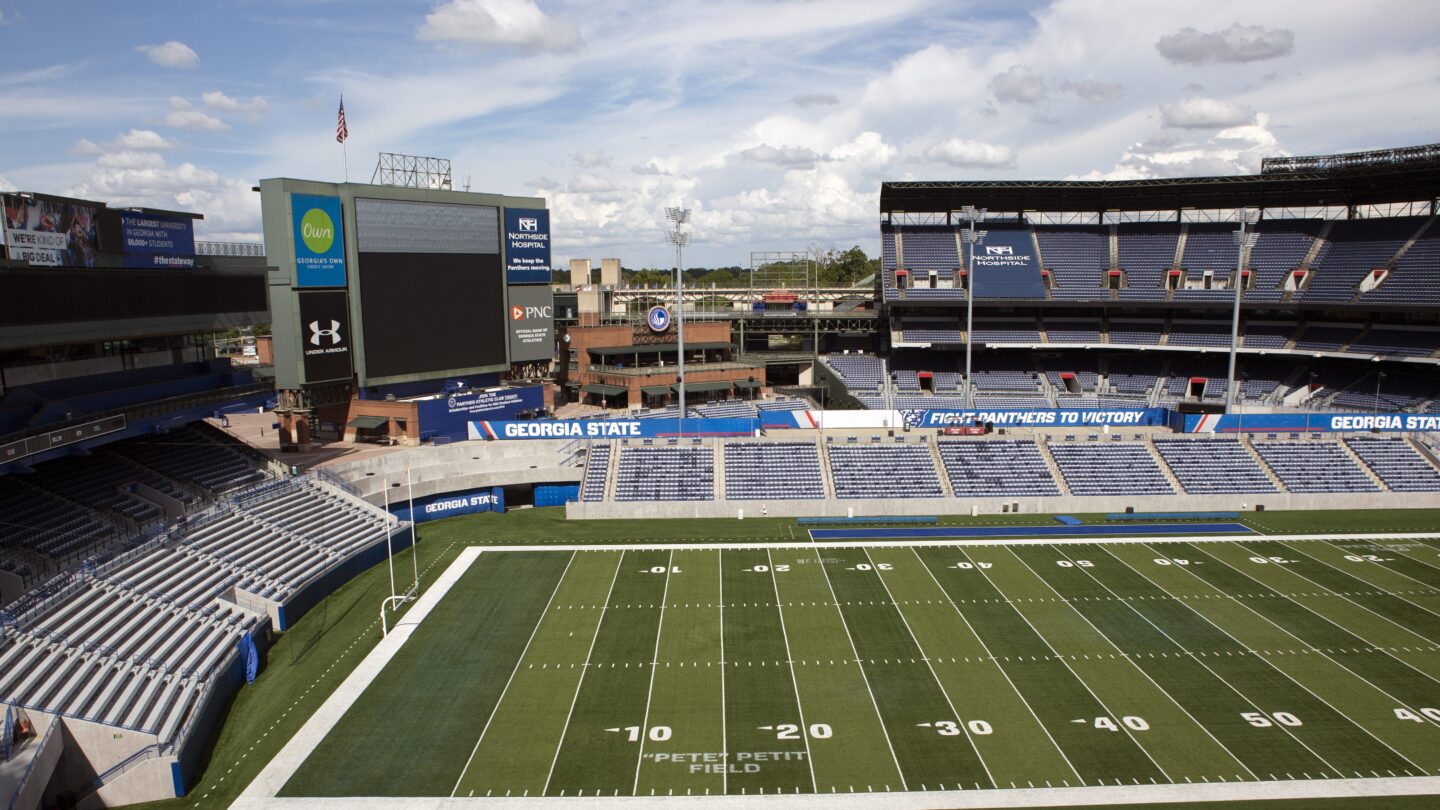
“We’re going to be probably be one of the most diverse neighborhoods in the city,” Turner said.
“We have public housing. We have senior housing, and we’ll have student housing. We have single-family homes, we’ll have apartments. We have things that other neighborhoods won’t have. And it will be built into our geography.”
At July’s neighborhood meeting, Carter’s Jack Murphy sat toward the back and listened, until the agenda called for his update on the developer’s progress – a regular part of these meetings.
Standing before the room, he doesn’t seem to flinch when residents pepper him with questions about things like placing historical markers and updating murals throughout the neighborhood.
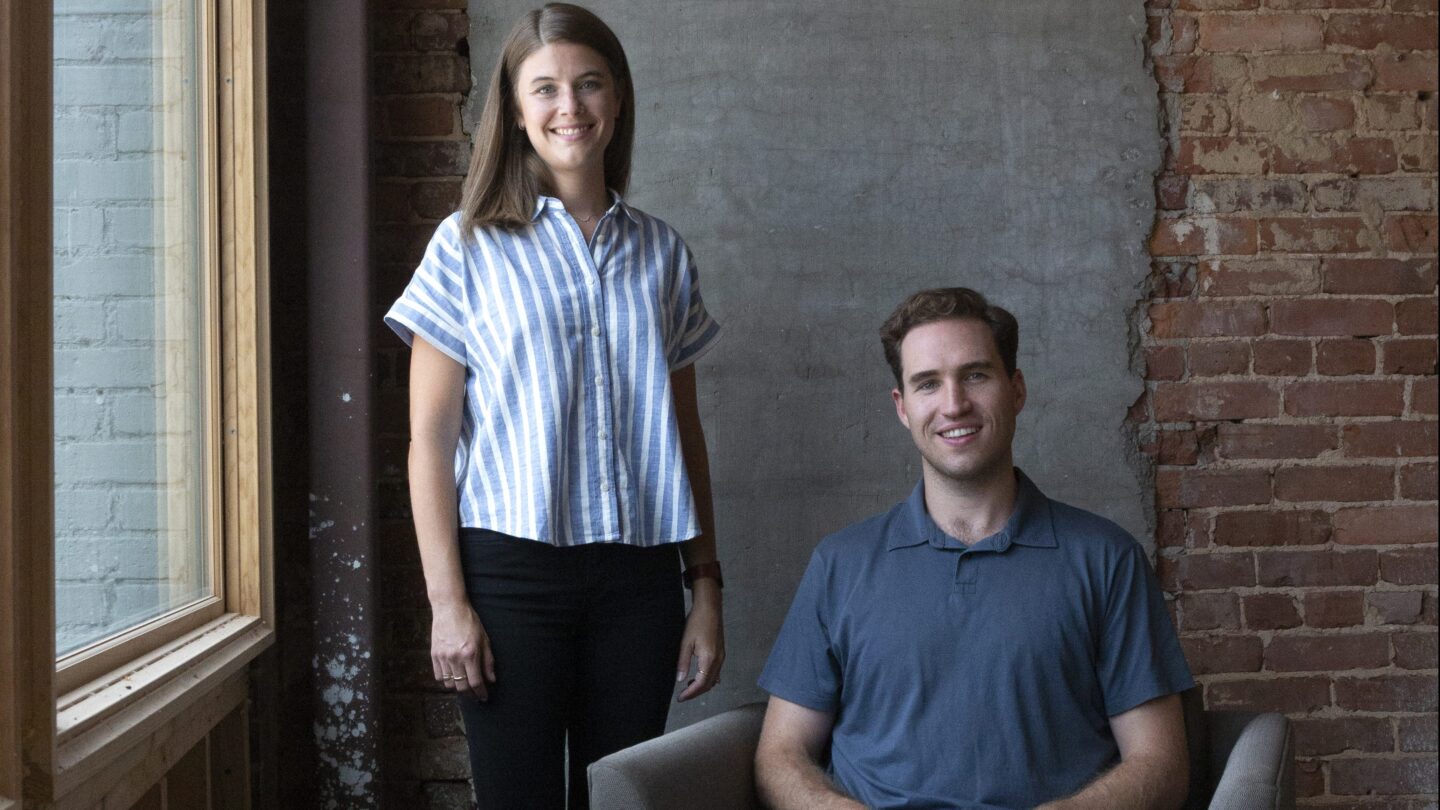
This kind of dialogue has been commonplace as this era in Summerhill unfolds.
“We needed to include them in the plans and hear their thoughts and tell them what we were planning to do and make sure that everyone was on the same page,” he says of Carter’s role in Summerhill. “And then when we go forward to execute it, there’s no surprises, nobody feels like they were duped.”
Murphy says, from a development standpoint, Summerhill’s brick and mortar had “good bones.”
But much more than sturdy brick buildings prime for flipping: Carter encountered a community where, as the neighborhood group’s name suggests, residents were organized.
They were ready to be heard and, Murphy says, Carter was willing to listen.
I do think that people in other neighborhoods could learn from this,” Murphy said.
“But we’ve got a lot to learn, too. So it’s by no means the only way to do it. We’re still trying to figure it out, too.”
Resident Wanda Rasheed says it’s “surreal” to walk down Georgia Avenue these days, past the once boarded-up storefronts, where Carter’s efforts are underway.
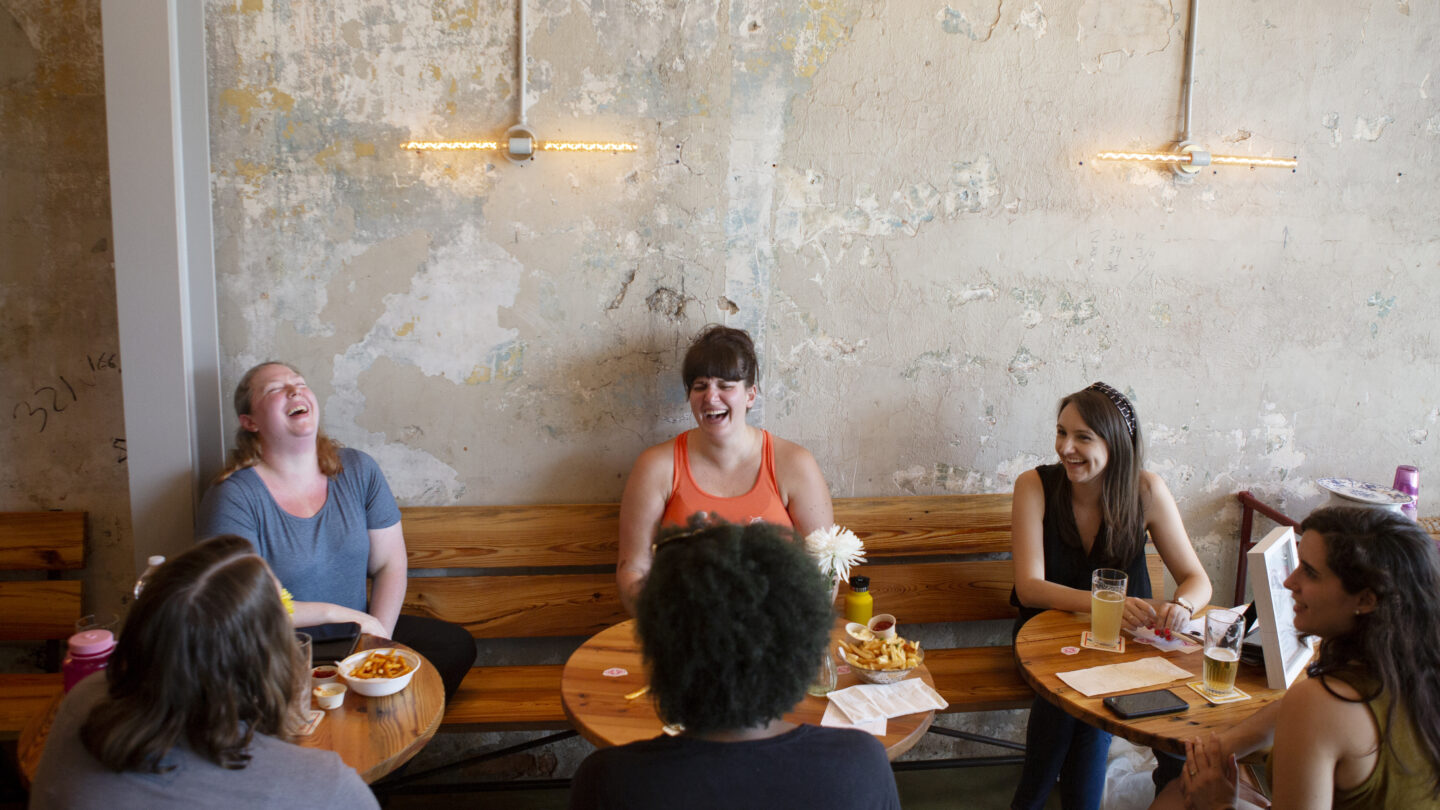
For more than 15 years, she and her husband, Kenneth, and their family have called Summerhill home.
Wanda says she’s excited about the changes happening in their neighborhood, while Kenneth remains more skeptical.
“I don’t have this fantasy that the investments by Carter and GSU are primarily concerned with Summerhill residents, I know better than that,” Kenneth Rasheed said.
I’m just a leery kind of person because I understand developers have their own agenda, and they have a profit motive.”
Despite his hesitation, Kenneth commends the efforts. He said he appreciates the increased walkability in the neighborhood and thinks it’s good for property values — although he would like to see more affordable food options and worries about longtime residents being edged out.
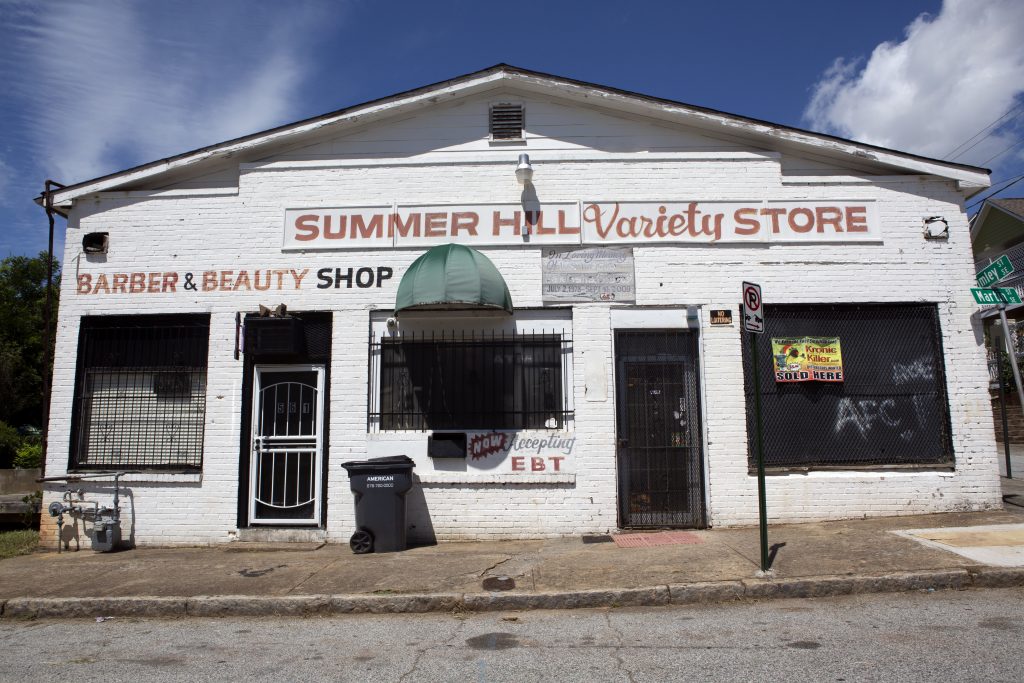
“Summerhill, as a neighborhood, did stand strong in an attempt to really get a good, viable project out of the properties,” Kenneth said.
As things continue to grow and change in Summerhill — where so much history has happened — the neighbors are prepared to be vigilant.
“What I see is good for us in general,” he said. “But there’s going to have to be significant oversight. And neighbors staying involved in and staying abreast of what’s going on.”
